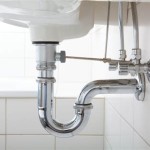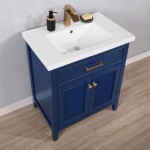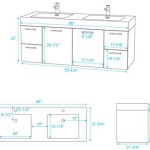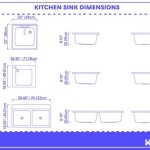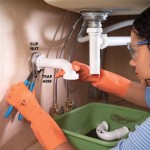Best Under Sink Water Softeners
Hard water, characterized by high mineral content, can wreak havoc on plumbing, appliances, and even skin and hair. Under-sink water softeners offer a compact and efficient solution for addressing hard water issues directly at the point of use, typically in kitchens or bathrooms. These systems are designed to remove minerals like calcium and magnesium through an ion exchange process, providing softer water for specific tasks like washing dishes or handwashing.
Choosing the best under-sink water softener requires careful consideration of several factors, including water hardness level, household needs, and budget. Understanding the different types of softeners available, their features, and their limitations is crucial for making an informed decision.
Types of Under-Sink Water Softeners
Several types of under-sink water softeners cater to different needs and preferences. These include traditional salt-based systems, salt-free conditioners, and magnetic or electronic descaling devices. Each type operates differently and offers distinct advantages and disadvantages.
Traditional salt-based softeners utilize a process called ion exchange, where hard water minerals are exchanged for sodium ions. These systems are highly effective at removing minerals and producing genuinely soft water. They require periodic regeneration with salt, which involves flushing the resin bed with a brine solution to restore its softening capacity. This process requires regular salt replenishment and produces wastewater.
Salt-free conditioners, often referred to as water descalers, do not actually remove minerals from the water. Instead, they alter the structure of the minerals, preventing them from forming scale buildup. These systems are a good option for individuals on sodium-restricted diets or those concerned about wastewater discharge. However, they do not provide the same level of softening as traditional salt-based systems.
Magnetic and electronic descaling devices are marketed as a more environmentally friendly alternative. They claim to use magnetic fields or electronic pulses to prevent scale buildup. However, the effectiveness of these systems is often debated, and scientific evidence supporting their claims is limited.
Key Features to Consider
When selecting an under-sink water softener, several key features should be considered to ensure optimal performance and suitability for specific needs. These include grain capacity, flow rate, regeneration frequency, and installation requirements.
Grain capacity refers to the amount of hardness a softener can remove before requiring regeneration. It is typically measured in grains of hardness. Determining the appropriate grain capacity depends on the water hardness level and water usage. A higher grain capacity is generally recommended for households with very hard water or high water consumption.
Flow rate indicates the amount of water that can pass through the softener per minute. A sufficient flow rate is crucial to ensure adequate water pressure at the faucet. Look for a softener with a flow rate that meets the demands of the intended application.
Regeneration frequency refers to how often the softener needs to be regenerated. Traditional salt-based systems typically regenerate based on a timer or a meter that tracks water usage. Frequent regeneration can be inconvenient and increase salt consumption.
Installation requirements vary depending on the specific model. Some softeners require professional installation, while others can be easily installed by homeowners. Consider the complexity of the installation process and the available plumbing configuration when making a selection.
Benefits of Under-Sink Water Softeners
Under-sink water softeners offer several advantages over whole-house systems, particularly for addressing specific hard water problems in kitchens or bathrooms.
Targeted softening allows for treating water only where it is needed, which can be more efficient and cost-effective than treating all the water entering the house. This is particularly beneficial for individuals primarily concerned with the effects of hard water on dishwashing or handwashing.
Space-saving design makes under-sink softeners an ideal solution for smaller homes or apartments where space is limited. They can be discreetly installed under the sink, minimizing their visual impact on the kitchen or bathroom.
Reduced appliance maintenance is a significant benefit of using soft water. Hard water can contribute to scale buildup in appliances like dishwashers and water heaters, reducing their efficiency and lifespan. By softening the water used in these appliances, under-sink softeners can help extend their longevity and reduce maintenance costs.
Improved skin and hair health is often observed with the use of soft water. Hard water can leave skin feeling dry and itchy and hair looking dull and lifeless. Soft water can help improve skin hydration and hair manageability.

Under Sink Water Filter 5 L Ro Uv At 7000 Piece In Bengaluru Id 2855375518712

Under Sink Filtration Systems Pentair Water Solutions

The Best Under Sink Water Filter For 2025 Reviews By Wirecutter

Whole House Vs Under Sink Filters

Under Sink Water Filter System 21 30 Litre Ro Uv Uf At 14000 Piece In Navi Mumbai

Zerob Kitchenmate Pro Uv Under The Sink Water Purifier Battery E

Zerob Ro Uts

Under The Sink Or Counter Water Purifier Ing Guide Kent Ro

Under The Counter Water Purifier A Space Saving Solution

Under Sink Water Filter System 21 30 Litre Ro Uv Uf At 14000 Piece In Navi Mumbai


